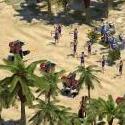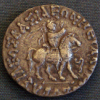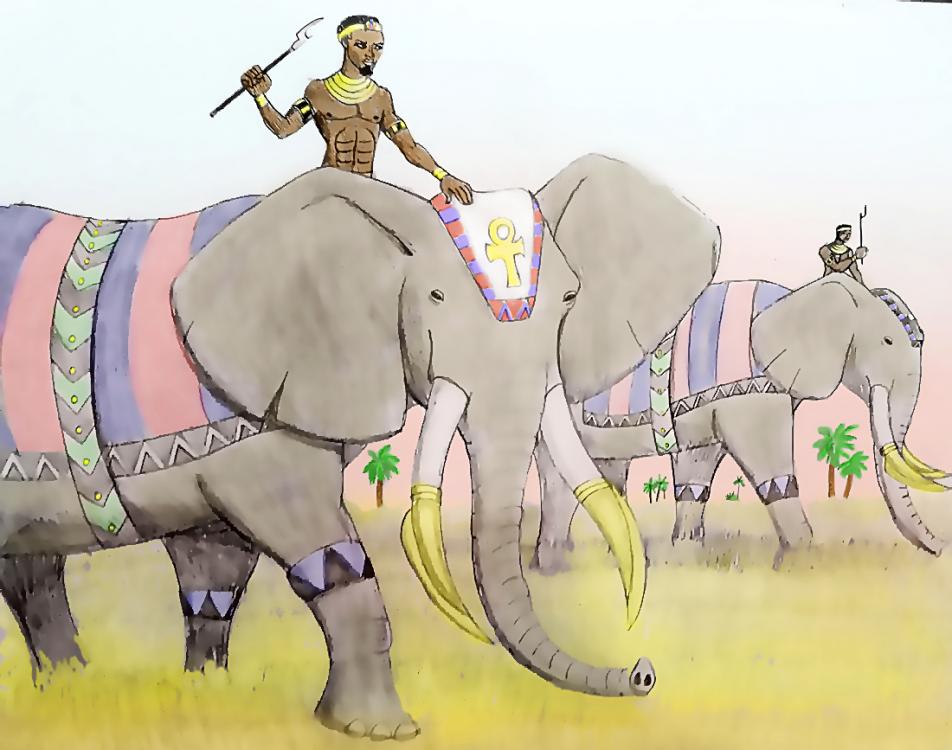Leaderboard
Popular Content
Showing content with the highest reputation on 2017-05-17 in all areas
-
This is an updated and expanded version of The Road to Expert for the a21 balance. Don't fall into any of these early game traps: Farms go adjacent to your CC or farmstead, as close as they will go. I've seen many new players who put them a distance back. Don't do that. Don't use women for mining. Don't use men for food gathering. Use women or men for woodcutting. Cavalry are for hunting chickens or other animals. Only cavalry are good at this. Hunting is a very fast way to get food unless the animals are very far from the dropsite. If you have berries, build a farmstead right next to them and have some women harvest the berries. It's twice as fast as farming. Don't let your workers carry resources too far. Put the storehouse right adjacent to the trees when they chop wood. If your workers (except for hunting cavalry) are walking twice the width of a storehouse to return resources, they are walking too far. Don't make a barracks until at least the end of age I. A lot of new players make a barracks way too early, or even more than one. Your CC can produce enough soldiers by itself. Don't make walls in age I either. Good players generally agree not to use walls, anyway, and plus in age I it's just a waste of resources that the enemy can simply walk around. Sentry towers are good only if you are right next to enemy territory and you want to prevent him from building a sentry tower that can attack your workers. Don't start mining anything until the end of age I. You don't need it. Don't use formations. Especially don't gather your army in age I and set it in formation outside your base to defend. That army is composed of workers, and should be harvesting resources at all times, unless you are using it to raid the enemy (an advanced technique). Corrals are an advanced technique because they require more micromanagement and there is a long delay before you get any net food from them (for a minute or two after you start building cavalry and corrals, they just cost you food and wood). Instead of corrals, use hunting, fields, or berries. Practice until you can have constant production of units from your CC (Civic Center) for the first 10+ minutes. That means: You need enough food income to produce women nonstop until population 50-70. You can produce soldiers after that. If you're planning on having a big economy, you can go up to 70 women, which does leave you more vulnerable to early attacks. You can use fewer women if you expect raids. Of course, if you're actually being raided, you need to make soldiers to defend (usually spearmen and cavalry). You need enough wood to make houses - and you need to make houses far enough ahead of time so that you don't get stopped by the population limit. Batch Production: like the previous step, learn to maintain constant production, but now with large batches (shift-click on the unit production icon several times to produce multiple at a time). Batch production by 5 is 38% faster than producing single units. Batch production by 10 is 57% faster. Batch production by 15 is 72% faster. It is absolutely worth it to make a batch of even 15 or 20, if you have the resources and population. You need more food to batch produce women this way. That means more on berries (like 10), more hunting, or earlier farms. You need to plan houses more in advance, too, so that you have enough population open when it's time to produce. A rule of thumb on houses is that (except for ptolemies) in the time it takes you to create 10 population worth of workers at your CC, one builder can build 10 population worth of houses. If you need a house faster than that, use several workers to build it. However, note that using more workers on the same house is less efficient, so build with just 1 worker if you don't need a house faster. However, note that it's inefficient to build more houses than you need. Don't be at 30 pop with 50 pop worth of houses; spend the wood on something else. Produce as large a batch as possible, but don't delay more than a few seconds to make a batch. It's better to just be producing 1 unit if you don't have enough houses or food for a batch. Don't queue up more than 1 batch of units from your CC at a time. Wait until the previous batch finishes, so your next batch can be as large as possible. Minimum batch size is configurable in the settings. Use a minimum batch size as small as you feel comfortable with - a minimum batch size of 1 is "optimal" because it lets you produce as large a batch as you have resources for, but it requires more clicks to produce a batch of a given size. borg-, who is the best player, uses a batch size of 2. Practice not harvesting resources you can't spend. If you're ever thinking "I have more food than I need - but I wish I had more wood" then you need to transfer some workers from food to wood, and figure out some way to spend the food. (Actually, you probably needed to transfer the workers two minutes ago, but late is better than never). If you have 1000 of any resource in age I-II, you have way too much. This can be counterintuitive to some new players, who think that because they have 5000 wood banked up that their economy is strong. A strong economy means you have a high income, not a high amount banked up. Resources you aren't spending aren't doing you any good. If you have extra wood, a good way to spend it is on economy upgrades. The highest priority upgrade is berry gathering, then woodcutting, then farming, then mining. You want economy upgrades as early as possible so you get the benefit for longer, except for the upgrades that are super expensive. Adjust your typical build order so that you avoid having too much of the resource. If, last game, you had way more wood than you could spend, then this game, don't put as many workers on wood so early. And so on. This is the true mark of skill in building your economy. You know you're doing it right when you have just enough of every resource you need, exactly when you need it, and little excess, and are producing in large batches. Watch replays of good players! A lot of people don't know where replays are. From the starting screen, they are under Tools/Options. Switch to that player's perspective in the replay and follow what they do - what they build, when they build it, how many farms they make, when they get upgrades. Then try to copy them in your next game. If you're spectating a game with good players, you can switch to the perspective of the best player and watch them as they play, instead of going to the replay. A list of good players can be found in this thread: multiplayer rankings . The ones near the top of the list, especially if they are also at the left margin, are the best players. Practice using Shift to queue up actions. For instance, don't just tell your woodcutter to make a house - tell him to make a house, then shift-click back on the tree! That way he will go back to woodcutting when he's done building the house, and he won't be idle. I always do this whenever I build a structure. If you change your mind and want him to make a second house instead of going back to the trees, you should first select him, then click (without shift) on the house he's building to clear his work queue, then shift-click to build the new house. If you just shift clicked to build the second house, he would go back to the trees like you told him earlier after finishing his current house instead of building the second one. Work out exactly what you will do in the first minute, with low resources (the usual resource setting). This is a "build order." For every civ, you want to put the cavalry on chickens and the women on berries, and the men on wood. You also generally want the first batch of 6 women produced from the CC to chop wood (depending a little on your minimum batch size), and the next 5 women from the CC to harvest berries, after which you will be at 20 population. The order in which you make a storehouse, a farmstead, get the berry upgrade, and make your first house can vary. Britons and Gauls can build a farmstead at the berries, build a storehouse at the wood, and research the berry upgrade. They will have plenty of time to get 75 wood and make their first house, because they get a population bonus from making the farmstead and storehouse. Most civs have houses that cost 150 wood and grant 10 population. With these you can't get the farmstead, the storehouse, and the berry upgrade all at once, and still have enough wood for your first house. You have to pick between the storehouse and the berry upgrade. If wood is very close to your CC, you can get the farmstead and berry upgrade, and get the storehouse later. If wood is far away, you need a storehouse (and a farmstead), so you have to skip the berry upgrade to have enough wood for the house. With these civs you will need to use 3-4 workers to make the house once you have 150 wood, so that it will be done in time. With a civ that has a house that costs 150 wood, I batch 6 women and put them on wood, batch 2 women for berries, start to batch 2 more women for berries and at the same time start making the house with 4-5 woodcutters (I have woodcutters return wood prematurely to have 150 wood soon enough), make one last woman for berries, and now I'm at 20 pop and the house finishes just as the last woman is produced. Iberians and Mauryans occupy a middle ground since their houses cost 75 wood but they don't have the population bonuses of Britons/Gauls. You can figure something out if you want to play these. Mauryans have an elephant, which can do the job of a storehouse or farmstead and help build houses. Ptolemies need less wood, but at least two workers building houses (perhaps three or four). Work out more of your typical build order. After you're at 20 population, additional women should go on wood. "Five fields as fast as possible" is a good rule of thumb - make sure that you are already building your next house, and then if you have 100 wood, make a field and put 5 women on it, until you have 5 fields with 25 women on them. You can transfer women from wood to farming if your CC doesn't have a batch ready when it's time for the next field. If you have extra berry patches, build farmsteads by them instead of making farms. You can figure that one berry patch with 5 women on it equals two farms. You will need to make farms later when the berries run out. Be aware that berries leave you more vulnerable to cavalry raids, but they're still usually worth it. If there's plenty of hunting, you can build some extra cavalry to hunt instead of women (usually, start hunting sometime after population 20). Shift-click your cavalry beyond the animal, and then shift-click on the animal, so that when the animal runs it will come back to your base. Don't make too many cavalry; make sure you're getting enough wood in proportion to your food income. Hunting gets you a lot of food. To transfer women from wood to farming, select the women, then shift-click on the storehouse so they drop off the wood, then shift-click to build the farm. This ensures they do not waste their last load of wood when they stop chopping. You can also go up to six, seven, or eight fields, and indeed you should if you are booming your economy. Use hotkeys for at least your production buildings, perhaps also other units. Select your CC and press Ctrl-1, and now you can select the CC again just by pressing 1. Your barracks can go on group 2. This helps you to keep production going smoothly even if your attention is elsewhere. Learn to use attack-walk. This is the hotkey "ctrl", combined with a right click. Units on attack-walk will attack enemy units in their way. If you don't want your soldiers to attack buildings automatically (usually you don't), you can use ctrl-q-click to have them target only units. I actually have edited my local.cfg file (see https://trac.wildfiregames.com/wiki/GameDataPaths ) so that ctrl-click targets only units. During a large melee combat, repeatedly select your units and ctrl-click. This makes them choose new targets close to them, and stops them from walking to targets far away. Doing this increases your army's DPS. Learn the difference between attacking a structure or siege engine, and capturing it. Ctrl-click on the structure for your units to deal damage to the structure. Bear in mind that most units are pretty bad at damaging structures, the main exceptions being slingers and siege engines, and swordsmen to a lesser extent. Otherwise, a regular click will make your units try to capture the structure, which may be impossible if the structure is garrisoned, unless you've heavily damaged the structure first. Usually you want to kill the enemy army before attacking or capturing any structures. Otherwise you will take large amounts of damage while attacking the structure. Rushes! Cavalry rushes are hot in a21. It's best to use melee cavalry, because they kill women faster: Macedonians and Romans have melee cavalry in age I, and many civilizations have melee cavalry in age 2. Attacking your enemy is a good idea if you've been using cavalry for hunting, after the animals run out. It's best to use at least 10 cavalry for raiding. That way, they kill things fast enough, and damage will be spread over the group so that fewer cavalry die. Target women preferentially, or enemy soldiers in small groups. Run away from larger groups of spearmen. Put your cavalry on a hotkey so you can control them more easily. To attack, run the cavalry (without attack-walk!) past the enemy units, until the cavalry are mixed with the enemy a bit. Then ctrl-click to have them all suddenly attack, or alternatively press "h" which makes them halt their current run order, and attack the enemy. If you're attacking and more enemy soldiers (especially spearmen) show up, run away just before they get there. You only want to fight where you have a big advantage. Keep running away and attacking a few times, until you notice the average HP of your cavalry is getting low (if the average HP is below perhaps 60% or 70%, that means many cavalry are on the verge of death). Then you should retreat your cavalry and put them in your CC or in your temple. After they've healed, you can attack again. You don't want to let your cavalry die if you can avoid it; you want to maintain a high kill/death ratio. If the enemy is chasing you with too many of his worker soldiers, you can just keep running around. As long as they are chasing you, they're not working, so your attack is costing him resources. If the enemy defends with cavalry, you should kill them with a large number of your own cavalry. If he has too many, you have to run away and think about your own defense if he counterattacks. If you're raiding in age 2, build a temple to heal afterwards. If your first rush is effective, just keep making cavalry to make it even more effective. You can keep two groups of cavalry, one in the temple healing, the other out raiding the enemy, and switch them so he is under constant pressure. They should be under two control groups. Your production buildings need to be on hotkeys as well so you can keep your economy going while you are raiding. To defend against rushes, it's first important to use the bell icon on your civic center. Click it when a raid is coming, and all women will try to hide in houses or your CC. This will prevent the enemy cavalry from slaughtering them all. There's another bell icon on your CC to end the alert and send your women back to work. Also mix spearmen with your women. If rushes are really bad, you can try farming with spearmen, or just leaving some spearmen idle by the fields. Building a solid wall of houses around your fields can help a lot. Getting cavalry of your own is also good. Sadly, towers are not that effective at stopping cavalry rushes. They do help, but cavalry can just keep running by them unless you really have a lot of garrisoned towers. It only takes a few seconds to kill some of your women, then the cavalry can go back and heal. It's better to rely on spearmen, walls of houses, and your own cavalry. Hold down alt and drag over your woodcutters or miners to select only the soldiers, and not the women. After you've used some soldiers to chase after the raiders, you can click the "back to work" button with the soldiers selected (looks kind of like a brown wagon wheel or maybe a basket) and your workers will go back to chopping or mining. Skiritai rush Play Spartans, ideally with a 200+ population limit. Boom to 60 population with only women (hoping you don't get rushed), then make 10 spearmen and put them on mining metal. Go to age II while making 2 barracks ASAP. Once in age II, start producing batches of only skiritai from your 2 barracks, with your CC idle. As soon as you produce each batch of skiritai, send it over to the enemy. You can use them like cavalry raiders to kill farmers, and you can also fight the enemy army unless they have greatly superior numbers, because skiritai are stronger than normal soldiers. Unlike with cavalry raids, usually just let the skiritai keep raiding until they die; they are too slow to walk back and heal. If all goes well, his army and economy are dead by 10-11 minutes into the game. Briton slinger spam This is a very powerful and common strategy. Boom a bit with women in age I, then start making slingers and mining stone. Go to age II, continuing to boom. Here you can make some celtic cavalry to go raid the enemy or just keep booming. Switch to making spearmen later in age II so that you have enough stone to get to age III soon. When you're going III, make sure you mine enough stone for a fortress, from which you make Cunobelin. Then select Cunobelin and all your slingers and spearmen (alt-double click on a slinger to select all slingers, shift alt-double click on a spearmen to select all spearmen, and bind the whole army to a hotkey), and send them at the enemy. Make sure Cunobelin doesn't die, because his healing is very powerful. It's good to keep making celtic cavalry in age III to raid or to kill enemy archers. Elephants and archers Boom to age III with any civilization that has both archers and elephants. For citizen soldiers, make archers. Once in age III, make a fortress (or persian hall, or elephant stables) and 3-5 war elephants. Select all your archers (should be 100+ archers) and attack (make sure you have temples to heal after). The elephants go in front. The enemy will be forced to kill the elephants, which are very tough, while the archers shoot the enemy. When the elephants are dead and the enemy is coming for you, send your archers back to your temples and heal, and make more elephants for round 2. The enemy usually loses more soldiers than you do, each time you attack like this. Also can work well with cavalry instead of archers, or cavalry mixed in. If the enemy has cavalry you might put some spearmen among your archers to defend. Seleucids can use massed Dahae Horse Archers, which become very tough with the Seleucid cavalry hero and the Seleucid bonus cavalry health upgrade. Caution! You cannot kill rams with archers. It's best to keep around some swordsmen or have an ally who can kill rams for you. Elephants can kill rams, if you manage to maneuver them into the same place, which is not easy. Trade In a long game, mines will start to run out. It's important in this case to start making lots of traders, to defend your traders, and to kill the enemy traders. 50 traders per player is a good number in a 200 population game. For both raiding and defending against raids, you want melee cavalry, and don't forget the walk speed upgrades at the corral. Having many fortresses and towers along the trade route helps as well, in part because you can garrison the traders in the fortresses/towers (also in houses or CCs). Long trade routes give more income, but are harder to defend. You want to set up the longest trade route that you can defend. Champions There is a difference of opinion on the value of champions in a21. I personally feel they are usually not that useful unless the game goes on for a long time, such as because there is a narrow chokepoint or it's a naval map. I prefer to get upgrades for my citizen-soldiers before I start making champions (except for war elephants, of course!). Massed archers, slingers, or war elephants can fight effectively against a couple dozen enemy infantry champs at a time, which is why you attack before the enemy has amassed larger numbers. However, there are some experts who swear by champions. An exception: Athens has champion archers which are basically the reason to play Athens. Athens can produce these archers from relatively cheap buildings, which makes it easier to mass large numbers of them. Use citizen-soldier spearmen to defend the archers against cavalry, and to tank damage when fighting enemy infantry. The downside is that Athens have no rams or elephants, only catapults which deal damage very slowly, so ideally you would have allies to send rams or elephants for you. Melee cavalry champions are effective at raiding later on, and can capture buildings and even CCs if the enemy army is busy somewhere else. Coordination with your allies Before doing a big attack, look around and see if your ally has an army that can help you. Ask him. A combined push is much better. If you are getting attacked, or if you see a large enemy army on the move to one of your allies, or if you see enemy cavalry raiders, don't forget to tell your allies what's going on. A simple "purple attacks mid" when you see the purple player send an army through the center, can help your team a lot. If an ally is getting attacked and needs help, one option is to help defend him. Another option is to counterattack and kill the enemy's undefended base. Which you do should depend on how close your ally is to you, how fast your army is (a fast cavalry army can defend allies better), and whether you have an army that can kill buildings quickly (slingers/rams/elephants). When the enemy is attacking (or when your teammates are attacking) is also a good time to use your cavalry to raid his women and traders, because the enemy's attention is split and he may not react in time to your raiders. Another possibility if an ally is under attack, is to send them resources. However, for this to work, the attack needs to proceed slowly enough that they have time to spend the resources. If you need resources, or have extra resources, don't hesitate to ask/offer. In a 3v3 or 4v4, it's good to have at least one player on your team who commits to making tons of melee cavalry for raids and for assisting allies.3 points
-
Here's some suggestions I have for the game. I've tried to avoid obvious ones (like improved pathing), but probably many of them have been discussed before. BUGS (1) When constructing buildings, workers should add a certain number of hitpoints to the building each second, but instead they add the floor of that number. This makes buildings take longer to complete in a lot of situations. For example, one unit building a 1000hp defense tower should finish it in 150s. But instead of adding 1000/150 = 6.667 hp to the building each second, they only add floor(6.667) = 6 hp each second. So it takes them 1000/6 = 166.7 seconds to finish instead of 150s. If you've ever just barely failed to finish a tower or fortress or something, this might've been the reason why. The worst example of this is in building a civil center. It has 3000hp and takes 500s to build, which is 3000/500 = 6 hp/s. With ten women, they each build at a rate of floor(6 * 10**0.7 / 10) = floor(3.007) = 3 hp/s. All together that's 10 * 3 = 30 hp/s, so it takes them 3000/30 = 100s to finish. However, with eleven women they each build at floor(6 * 11**0.7 / 11) = floor(2.922) = 2 hp/s, combined 11 * 2 = 22 hp/s, so it takes them 3000/22 = 136.4 seconds to finish. So in this case, adding an extra woman to help "speed up" the building process actually slows it down by over 30s! I think this occurs in the following line in "public/simulation/components/Foundation.js". Is there a reason to use Math.floor? var deltaHP = Math.max(work, Math.min(maxHealth, Math.floor(work * this.GetBuildRate() * this.buildMultiplier))); (2) Workers drop off resources at the nearest drop site, but it seems that "nearest" is calculated using the distance to the center of the drop site instead of the edge. Can this be changed, or is the calculation too complicated? (3) Units stand in a square formation to attack buildings, why? They can attack from a circular range but instead walk closer. IMPROVEMENTS (4) Can we have a hotkey to cycle through buildings where we have units garrisoned? We currently have one to cycle through idle units, but garrisoned units don't count as "idle". More than a few times I've put women in houses to protect them from raiders, only to forget about them for the rest of the game! You can have units garrisoned inside allied structures, so the hotkey should cycle through them too. (Also, houses should get a flag when units are garrisoned inside.) (5) Can we have a hotkey for the town bell? (6) Can we control which units towers, etc., attack? I'd like my tower to focus on the opponent's tower, rather than also attacking their houses and fields. (7) Can we let women and worker elephants place the foundations for every building? Right now it's annoying to select a man chopping wood, have him place the foundation for an outpost or house on the other side of my base, click back to wood so that he doesn't move, and then select the woman or elephant to go actually build the building. It's a lot of unnecessary micromanagement. Either let women and elephants build the foundations themselves (my preferred solution), or if you don't want women building barracks or whatever, then don't allow them to build them period! MORE ANNOYING THINGS (8) In order look at unit stats (to check if your opponent has blacksmith upgrades, for example), you have to stop your cursor over the shield icon and then wait half a second for the tooltip to pop up. I'd like it if that just popped up immediately while you're hovering over the icon. The half second delay is annoying enough, but because I use a pen rather than a mouse it's actually hard to stop exactly on the icon. (9) There's only 13 civs if we count random, do we really need a scroll bar? Also in replays, can we make the player drop-down menu wider (when there's room) and longer, to again remove the scroll bar? (10) In the lobby, can we select and copy chat? There's conversations or links I want to save, but I have to settle on taking a screenshot. EXTRA THINGS (11) I don't know how complicated it would be, but I'd like to see corrals treated different in the summary page. Currently, if you make one sheep you're credited for one unit created, 100f gathered and 50f spent. This is technically correct, but in the game you're at the same point as someone who's simply gathered 100-50 = 50f from berries, and their stats are 50f gathered, 0f spent, with no units created. So instead I'd like sheep to be ignored in terms of "units created", and for them to count as -50f gathered rather than +50f spent. So after one sheep they'll have zero units created, 100-50 = 50f gathered, 0f spent, the same as the berry player. In this way, the unit and resource statistics will be comparable between those who use corrals and those who don't. (12) I'd like "random" civs to be a 1/12 chance of each one, rather than the current 1/9 chance with briton/gaul and athens/mace/sparta grouped together. I think this is it for now. I'm looking forward to Alpha22!3 points
-
0 A.D Mod Introduction to Antiquorum Antiquorum is a large-scale modification for the game focusing mainly on historical authenticity and completely reworking the games unit roster and balance throughout the phases. These additions add a whole new aspect to the game and would allow more variation in game battle compositions as well as overall strategies for certain civilisations. Currently, I'm working on this onerous task alone, but if you are interested in helping out you can contact me. Feedback and constructive criticism are welcome as well! Gameplay Changes The mod will focus on slower gameplay, adding a more diverse and strategical look on the game. Random maps will most likely be prominent in the mod seeing as I want scouting to stay important. Starting metal and stone mines will be placed much further away from the civic centre most likely. LOS will generally be much smaller than the base game. Unit Roster & Unit Creation Changes Overview Civic centres now only train women/villagers and the very basic unit of most factions. The Spearman. Certain civilisations might have exceptions. The barracks unlock several early units you would expect from a barracks and cc in the main game (not all!). The barracks cost has been increased. This gives players a more significant choice of economy or military. It also makes raiding with cavalry a much more viable strategy in the game. Light cavalry is much cheaper now. New Slaves fully implemented to all factions, created in the market (Have a finite life span). Numerous new units added to the game. Unit Class/Structure After reviewing the situation with my mod, I have decided to follow a Unit structure much like @wowgetoffyourcellphone's proposal in this thread (Did not quote here to save space): 1. Slave - Their sole use is for the economy, if possible, male and female versions. Possible short lifetime? (Can't build?) 2. Citizen/Villager - Much like the basic villager in the main game, a possible aura that gives nearby slaves a gathering bonus? 3. Citizen Soldiers - Normal barracks military units generally used for attacking, can also build military structures. Have the same aura as citizens. They do not gather materials. 4. Champions/Trained Soldiers - Trained from city phase buildings (<<<< There might be exceptions). Professional/Trained soldiers with a sole purpose of fighting/capturing. 5. Heroes - Very minor changes (balancing etc.). For the most part will stay the same as the main game. +. Extras - Mercenaries may vary, sometimes fitting in the citizen soldiers category (Maybe their own since they will not be proper citizens), Champions/Trained soldiers, and possibly even slaves? Quick Note: If you have any ideas for a new unit to be added to the game, please visit this google form and fill it out! This would be Hugely Appreciated, Thankyou. So hope you all enjoyed this little teaser! Look forward to heavy updates! Cheers,2 points
-
Walls have been substantially nerfed. I think it's just tradition at this point not to use them. In previous alphas, walls and concentrated wall towers were extremely powerful and could drag games out forever, but I don't think they are so strong anymore. Perhaps attitudes will change over time.2 points
-
Correct me if I'm wrong, but if you set camera fixed in isometric view, you don't need to create 3D models do you? You can just have a 3D box with a 2D sprite on it positioned so that it always faces the camera (which is easy to do with a fixed camera position). Of course that will break things like proper 3D shadows, but it could be a nice way to start maybe? Eventually assets might be converted to true 3D models and then you could even unfix the camera, but with fixed camera that doesn't need to happen right away. Also, Wyrmsun on Pyrogenesis:2 points
-
2 points
-
i have been looking for free 3D models to try to make it look a bit better and i have found some axes and shields but the most important one i found a longboat wich is realy great and i have adapted it to the size of 0 ad and now its looks good but i have no idea how to make it have oars and how to animate them, and i have included a sail deployed when its moving. here i leave a size comparation image of the ship.1 point
-
1 point
-
You know, I'd love to contribute concept art to this proposal of yours. And I am flattered by your coloring my old artwork!1 point
-
1 point
-
I had seen screenshots of 0 AD with isometric view, and indeed it looks stunning Unfortunately, having everything in 3D (even if we managed to give the 3D models the somewhat cartoonish look of the sprites Wyrmsun uses) would require redeveloping A LOT of assets for Wyrmsun, which isn't really feasible.1 point
-
Walls aren't allowed for the reasons wowgetoffyourcellphone said. When causative said they are (a) a waste of resources, and (b) easy to walk around, it is only true for age 1 where it takes some time to close fully the wall, so at this age it is some investment. But after that, walls protect very effectively from both raids and full scale attacks, in a way that they would bring games into full trading very long games, because very hard to break, and i think there are some way to mass wall tower in an area, that fires a lot of arrows that make it even more difficult to break. Also, you could add multi layers of walls.1 point
-
1 point
-
1 point
-
1 point
-
@Andrettin did you see the second linked article from this post? It describes how 0 A.D. gradually transferred from full 2D to full 3D in early stages of development. It may have some useful insights for you. As far as I understand you're considering switch from "Full 2D" to "3D Terrain, 2D Objects" (using the article terms), right? (or you want to render the terrain in 2D too?)1 point
-
If this is the case, then walls need to be rebalanced in some creative way.1 point
-
1 point
-
The illustration you provided was from Osprey's The Army of Herod the Great, from their Men at Arms series. Alright, we'll use the Herodian army model for reference.1 point
-
@balduin: as long as it's only being used as reference it can be any license. However, when it (or parts of it) actually will be used in the game it should be a CC-BY-SA or CC0 or something1 point
-
@Tyrannosaurus Thank you for your support and contributions! I love your illustrations, and they are quite useful as well.. I would like to see a bigger drive of historical artists contributing towards the visualization of ancient Kush (and other African civilizations for that matter), and your work goes a long way, partly because of the rarity of it. [By the way, I really like the Ram's head outline on the shield embossment of the two spearmen, representing Amun.] Using our references, do you think we might expect more work from you? I'd love to see what you'd make of it...1 point
-
1 point





.thumb.png.ce58cea22940c255f5b0a735d5abee36.png)









